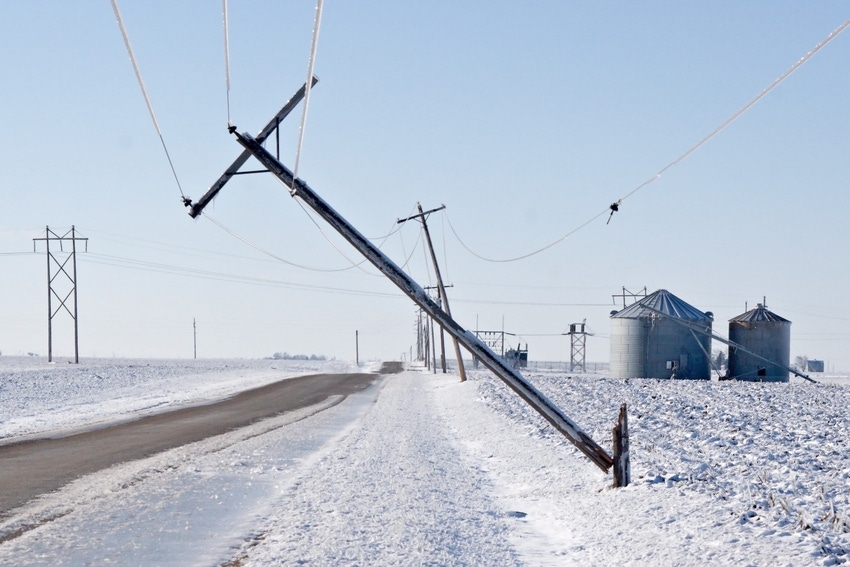Iowa State University estimated the cost of production (live weight basis) in January at a record $73.59/cwt, the highest month since September.

A strong winter storm disrupted last week's hog market. Wednesday and Thursday slaughter was far below usual. Although Saturday's slaughter was up 33% year-over-year, it appears that roughly 120,000 hogs were carried over to this week for slaughter. This could be a drag on prices for the next few days.
Hog slaughter has been running above expectations in recent months. The heavy weight market hog inventory in USDA's December Hogs and Pigs report implied slaughter would be down 1.9% over the last 13 weeks. Actual hog slaughter has been more-or-less even with last year. The higher than predicted hog slaughter is likely due in small parts to an increase in slaughter hog imports from Canada, an increase in sow slaughter, more-current marketings evidenced by lighter slaughter weights, and adverse weather, but mostly to underreporting of market hogs in the December hog survey.
A change in pork production in one direction drives hog prices in the opposite direction with the percent change in hog price often double that of the change in hog slaughter. Last year pork production was down 2.5% and hog prices were up 5.8%. USDA is currently predicting that 2023 pork production will be up 1.6% and hog prices down 6.5%.
Normally hog prices move higher during the first half of the year. Thus far in 2023 hog prices have moved sideways and lower. The above-expected slaughter has depressed prices, with 51-52% lean hogs averaging only $53.82/cwt (live weight) in January, the lowest month since December 2021. The national average carcass base price in January was in the upper $70s. For the year of 2022, 51-52% lean hogs averaged $71.13/cwt (live weight) the highest since 2014. USDA is predicting an average 51-52% lean live hog price of $66.50/cwt in 2023, down 6.5% from 2022.
The futures market is implying the usual steady increase in hog prices until summer then lower prices until year's end. The futures market is not as optimistic about 2023 hog prices as at the beginning of the year.
Retail pork prices in January averaged $4.787 per pound, down 4.2 cents from the month before, up 3.4 cents from January 2022, and the lowest month since February 2022. For all of 2022, retail pork prices averaged $4.897/pound, the third consecutive record year.
The farm-to-retail price spread averaged $3.888 per pound in January, the most since October 2022. Of this spread, $3.242 was wholesale to retail (a record) and $0.646 was farm to wholesale.
U.S. pork imports were up 13.9% (163.781 million pounds) in 2022. Last year's pork imports totaled 1.344 billion pounds, the highest import level in over 40 years. Most major pork suppliers, except Poland and Hungary, shipped more pork to the U.S. than in 2021.
U.S pork exports were down 9.8% (688.821 million pounds) in 2022. Last year's pork exports totaled 6.338 billion pounds, the least since 2019. China, Japan and Philippines were largely responsible for the big decline in pork purchases. The biggest increase in pork exports was 279.227 million pounds more U.S. pork going to Mexico.
Last year the U.S. exported 23.5% of our pork production. Imports equaled 5.0% of our 2022 pork production.
USDA is forecasting 2023 pork imports will be down 25% while pork exports will be up a slight 0.2%.
The United States imported 6,485,901 million live hogs last year. All but 55 head came from Canada. Weaner/feeder pigs made up most of the hog imports.
Feed costs are high and expected to stay that way. USDA is predicting corn at $6.70 per bushel and soybean meal at $450/ton for the current marketing year.
Each month the economics department at Iowa State University estimates the cost of production and the profitability for Iowa hog farms. They calculated losses at $36.04 per head for hogs marketed in January. That is the biggest one-month loss since August 2018.
Iowa State University estimated the cost of production (live weight basis) in January at a record $73.59/cwt, the highest month since September.
Hog slaughter weights have come down in recent weeks. Barrow and gilt dressed weights are four pounds lighter than at the start of the year. At this time last year weights were two pounds lighter than early January. The likely reason for the sharp decline in weights is low hog prices and red ink. When producers are losing money on each hog they sell, they often respond by selling hogs sooner and lighter.
About the Author(s)
You May Also Like





